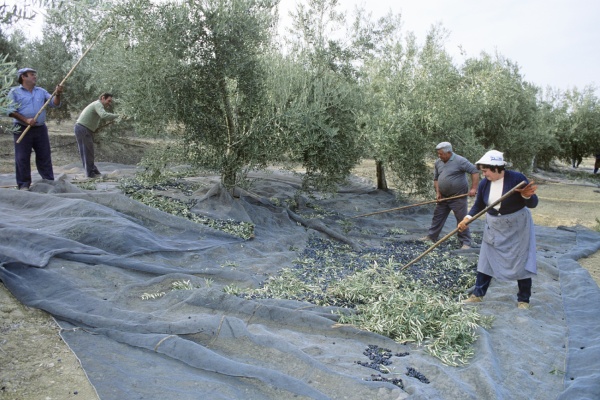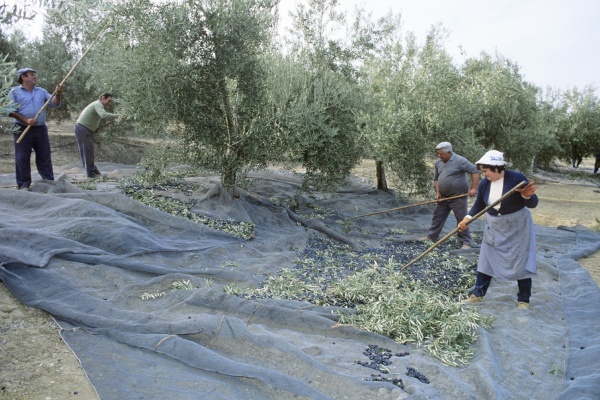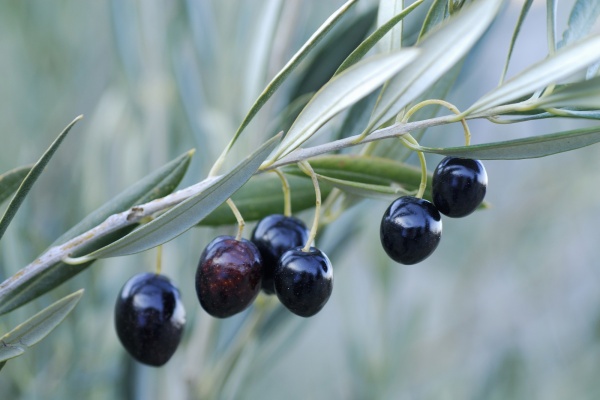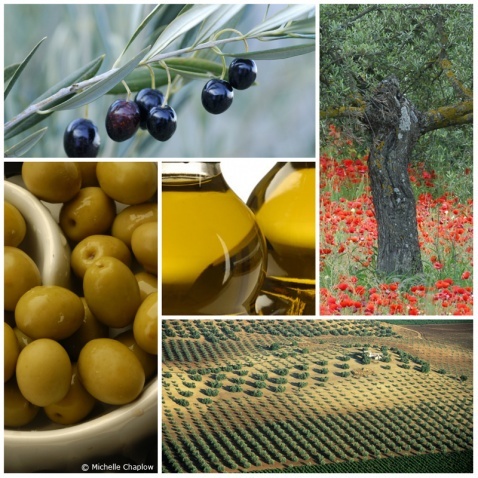Olives & Olive Oil
Andalusia is the world's largest producer of olive oil and its flavour is basic to the region's cooking. Starting at breakfast, when toasted bread is drizzled in virgin oil to eat with morning coffee.
Fried foods are superb. One of the "signature" dishes of coastal regions is pescaíto frito, a mixed fish fry with fresh anchovies, rings of squid, tiny sole, small hake and red mullet, all crisply fried in olive oil.
At tapa bars you'll also find fried croquettes and fritters. Even some typical sweets are fried in olive oil, such as roscos, anise-scented rings, and empanadillas, little pasties filled with sweetened and spiced pumpkin. Every province of Andalusia has excellent olive oil, but some enjoy the quality label of denominacion de origen (designation of origin, or D.O.). These are Sierra Magina and Sierra de Segura in the province of Jaén, and Baena and Priego de Córdoba in the province of Córdoba.
Andalusia's most famous contribution to world gastronomy--gazpacho--really has its origin as simple, peasant food--bread, olive oil and garlic crushed in a mortar. In Andalusia today gazpacho usually is made in an electric blender, but it is still bread, olive oil and garlic--plus tomato, cucumbers, onions, green peppers--and vinegar or lemon juice to set off the flavors. There are also traditional gazpachos with no tomatoes at all. An example is the "white" gazpacho of Málaga - bread, olive oil and garlic, plus crushed blanched almonds, served with muscatel grapes, a wonderful contrast.
Although most olive trees produce fruit destined to be crushed for oil, some varieties are flavoured for table olives, in particular the manzanilla and gordal. Other varieties are cured in traditional ways and flavoured with garlic, thyme and fennel. Andalusian markets usually have stalls selling a variety of olives, plus pickled vegetables and capers.
Read more about olive landscapes, olive groves, olive trees, olive harvest, olive oil mills, olives, olive oil and cooking with olive oil:

| LA Almazara, is a contemporary olive oil mill and museum designed by the French artist Philippe Starck. © Michelle Chaplow |
The LA Almazara Olive Oil Mill just outside Ronda is designed by Philippe Starck to provide an immersive experience that captures the essence of extra virgin olive oil.

| Olive groves near Ubeda, Jaen, Andalucia. © Michelle Chaplow |
Driving through Andalucìa, you will notice that the most abundant crop throughout the Andalucia - in particular, Jaen province, though also Seville, Cordoba and Almeria - is the olive. Line after… More →

| The traditional form of Olive harvesting in Andalucia © Michelle Chaplow |
The species of olive tree growing in neat rows across Andalucia today is the Olea Europeae. It is sufficiently important to have inspired the Regional Government to track every commercial… More →

| Harvest of the Andalucian Olives © Michelle Chaplow |
The main difference between the quality of olive oil and the quality of wine is that fermentation improves grape juice but damages olives.

| Spain produces more than 250 different varieties of olives © Michelle Chaplow |
Spain produces more than 250 different varieties of olives to be eaten whole or pressed into olive oil. In reality, olives are a very bitter fruit and in order to eat them this bitter flavour has… More →

| The olive and its oil represent a fundamental part of the Spanish diet © Michelle Chaplow |
Andalusia is the world's largest producer of olive oil and its flavour is basic to the region's cooking. Starting at breakfast, when toasted bread is drizzled in virgin oil to eat with morning… More →

| t is certainly surprising to discover that the oil can be extracted from the tiny fruit which is far so removed from a lemon as far as 'squeezability' is concerned! |
Olive oil requires an investment to ensure its cultivation, harvest and production leading to a nutritious and therapeutic oil that helps promote good health.

| Olives hanging in abundance, ripe and ready for harvest, their deep purple hues glistening under the soft sunlight © Michelle Chaplow |
The olive and its oil represent a fundamental part of the Spanish diet. Cold pressed virgin olive oil is a natural product that is very easy to digest. It has become famous as one of the world’s… More →

| With just olive oil, fresh Andalusian tomatoes, sea salt, parsley, and black pepper you can create a feast |
While olive oil forms the basis of the Mediterranean Diet, today even cheaper oils - such as sunflower oil – often take its place. In addition, much of the so-called olive oil sold at Spanish… More →









